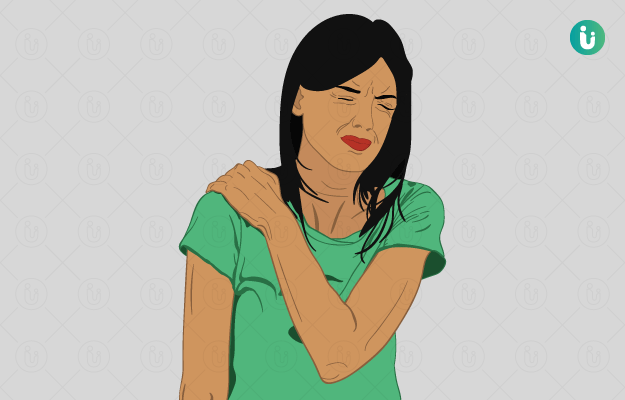What is pain?
Pain is an unpleasant physical sensation or emotional feeling that can originate in any situation and any location. The perception of pain is subjective and will be different in different people. Physical pain can range from a dull ache to throbbing severe pain and can be acute or chronic. You may experience recurring pain or it may be a temporary sensation.
What are its main associated signs and symptoms?
Pain itself is a symptom of some condition. Symptoms that are majorly associated with pain are:
- Restlessness.
- Agitation.
- Dull ache.
- Throbbing and pulsating sensation.
- Cramping.
- Inability to perform normal activities.
- Lack of concentration.
What are the main causes?
You may experience pain due to the following conditions:
- Tissue injury and damage.
- Damage or disease of the somatosensory nerves.
- Inflammatory diseases.
- Infections.
- Fractures.
- Menstruation.
- Pregnancy.
- Tooth decay
How is it diagnosed and treated?
Pain may originate from any location of the body. Severe pain needs to be diagnosed and managed at once. A thorough history of the patient can suggest which of the following tests should be carried out:
- Physical examination
- Blood test
- X-ray
- Ultrasound imaging
- Magnetic resonance imaging (MRI)
- Electromyography (to check muscle activity)
Pain is measured on either of these scales: Visual Analog Scale for Pain (VAS Pain), Numeric Rating Scale for Pain (NRS Pain), Chronic Pain Grade Scale (CPGS), Short Form‐36 Bodily Pain Scale (SF‐36 BPS), or Measure of Intermittent and Constant Osteoarthritis Pain (ICOAP). Treatment of pain includes the following options:
- Medications:
- Opioid analgesics for cancer pain and terminally ill patients.
- Non-steroidal anti-inflammatory drugs. (NSAIDS)
- Muscle relaxants.
- Tranquilizers.
- Physiotherapy
- Stretching exercises
- Acupuncture.
- Yoga.
- Hot and cold compresses.
- Herbal medications.
- Homeopathy.
Effective pain management can be done by a combination of one or more of the treatments. Healthy lifestyle, proper working posture, and regular yoga and meditation, coupled with regular medication to treat the underlying cause of pain can provide better results in pain management.

 Doctors for Pain
Doctors for Pain  OTC Medicines for Pain
OTC Medicines for Pain
 Pain articles
Pain articles

 Ayurvedic Treatment of Pain
Ayurvedic Treatment of Pain







 Dr. Laxmidutta Shukla
Dr. Laxmidutta Shukla











